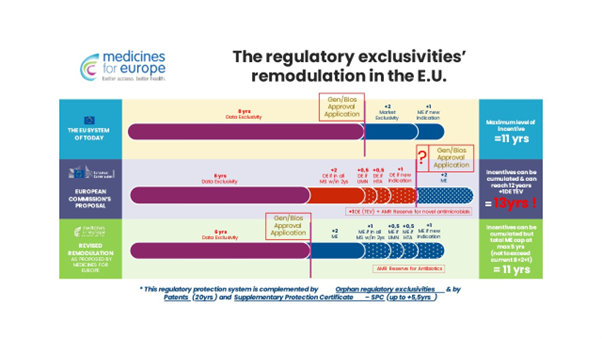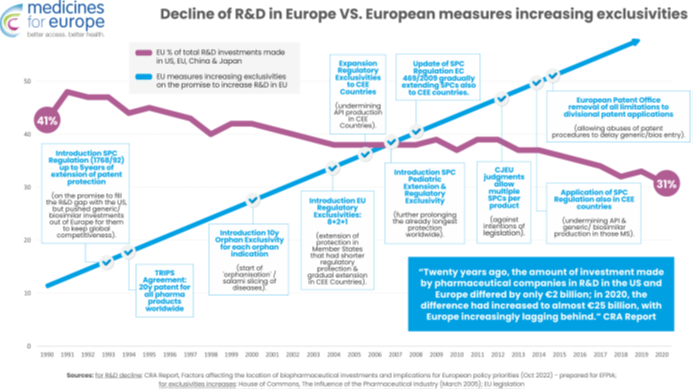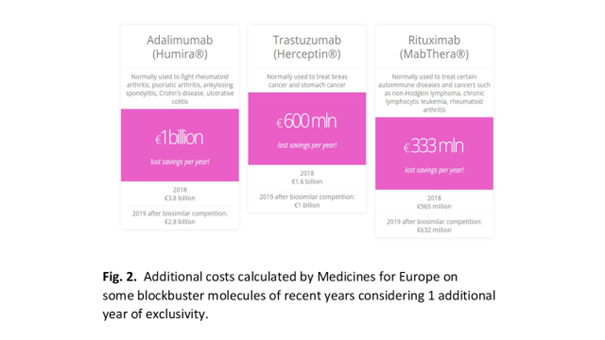Warsaw, 20 December 2022
Commentary of the ZPP on draft Regulation of the Council of the European Commission on the development of renewable energy as a key form of achieving energy independence of Europe
The Council of the European Commission is proposing another instrument to speed up investment in RES (Renewable Energy Sources) – the Regulation of the Council of the European Commission on the development of renewable energy as a key form of achieving energy independence of Europe;
Shortening the investment process in carbon-free energy sources is, in the opinion of Brussels, the basis for achieving independence from fuel from Russia;
The proposals of the Council could trigger a thaw for government-frozen solutions in the field of modern renewable energy;
Brussels does not look at the legal blockages in the area of renewable energy and speeds up the introduction of solutions for wind farms, district heating and even biomass and biomethane, one by one.
When reading the draft Regulation of the Council of the European Commission establishing a framework to accelerate the introduction of renewable energy solutions, it should be noted that most of the regulatory dispositions of the Regulation are in line with the expectations of the green energy sector in our country.
On many occasions, as the ZPP (the Union of Entrepreneurs and Employers), supported by the RES industry in Poland, we have drawn attention to the need to facilitate investment in that sector, which could primarily include post-mining and industrial areas. It seems reasonable to introduce regulations obliging administrative bodies, entities that deal with energy transmission and distribution, to determine appropriate areas for RES installations, where significantly simplified administrative procedures would be introduced to allow investors to quickly implement projects (e.g. road lanes along motorways, former landfill sites, large surface car parks) both for environmental (negligible, minimal impact on the environment), social (lack of conflicts and acceptance of residents) and technical (grid connection conditions) reasons. In this way, the installation of renewable energy generation infrastructure would be facilitated as administrative bodies, local authorities and grid companies would have to verify the compliance of such installations with local environmental and technical requirements. The issue of selecting areas for faster RES investments is proposed in the from of yesterday’s amendment to REpowerEU approved by the European Parliament – discussed at the end of the text.
With regard to photovoltaic investments, the Commission suggests reducing the time limit for issuing a building permit to one month, which seems a bit too short in our national circumstances.
The Regulation demonstrates the determination of the European Union countries to develop renewable energy sources and there is no doubt that the war in Ukraine will speed up decarbonisation processes in Europe.
The future economic image of Europe will be shaped based on green energy. This should be a supra-political guideline for the decision-makers in our country, which does not mean us giving up defending our energy interests, even those based on fossil fuels for a long time to come.
An example of reconciling energy interests is the assumptions of the programme “Bloki 200+”, as part of which the development of renewable energy is based on stabilising our own coal sources. Such a policy is certainly in line with the Regulation of the Council and it just needs to be properly presented and justified.
The fact of diversity of energy and heating situation in Poland must be understood in Europe, especially considering the new geopolitical conditions we find ourselves in after Russia’s aggression against Ukraine.
It should be noted that the draft Regulation does not refer to combined heat and power plants but only to the expansion of renewable energy power plants. Given the challenges of the heating sector, in terms of the need for its transformation, which is linked to, among other things, the proposals of the ”Fit for 55 package”, we believe that it would make sense to introduce a principle based on which the construction of RES installations in existing district heating systems could also benefit from accelerated procedures. This could be expressed as follows: The authorisation process for the expansion of district heating systems to include renewable energy projects and authorisations related to upgrading the assets necessary for their connection to the grid, should not exceed six months, including environmental impact assessment, if required by the relevant legislation. To be consistent, in the draft Art. 2 sec. 2, after the word “power plant” the expression “or combined heat and power plant” should be added, and in Art. 4, after each word “power plant” the expression “or combined heat and power plant” should be added.
We need to be aware that, in the future, it will be renewable energy sources that will be the basis of the European energy market and that Poland, with its huge burden of the energy sector with coal sources, must remodel its energy market to a much greater extent than other EU countries.
Observing the costs of generating energy from renewable sources today, it is already possible to predict the costs of energy and heat on European markets once energy independence is achieved. Poland cannot remain outside that market as high-cost sources and a loss of competitiveness would threaten our entire economy.
The Council formulates the need for immediate action and this requires more details as some of them will require statutory changes. Although the Council indicates that this is an internal regulation with the possibility of extension, it can be considered that it will be in place for a very long time and is likely to take a permanent form.
The Regulation draws attention to further works on the rules for direct contracting, the so-called CPPAs (Corporate Power Purchase Agreement), which is an extremely important form of the bottom-up shaping of energy market. This is closely linked to the development of distributed energy. Further on, the Regulation draws attention to the need to disperse energy and heat generation sources. So far, the Polish energy sector has been moving towards centralisation, i.e., in the opposite direction.
The document emphasises the need to reduce procedures for those sources that have particularly high generation potential and investment in which will bring rapid results for the system. This concerns onshore wind farms and large-scale photovoltaics. Meanwhile, the 10H rule blocking the development of that form of energy generation is still in force and the investment in photovoltaics is currently not particularly supported in our country. The sdherence of a Polish legislator to the assumptions of the proposed Regulation would increase the potential of onshore wind farms by at least 10 gigawatts of installed capacity, and perhaps as much as 20 gigawatts of installed green energy in solar sources, which could translate into the production of 40 terawatt hours of green energy per year in 2030. The acts allowing that level of green investment are being prepared. Today, their adoption depends solely on the political will of decision-makers.
The Council encourages joint action and cooperation within the framework of the Single Market Enforcement Taskforce (SMET ), which seems particularly relevant for our energy sector as we could assimilate some best practices and also, through such cooperation, we could participate in shaping the future energy market in Europe.
According to the proposal, the Regulation would have direct and immediate application, which is expected to lead to a swift, uniform and EU-wide approach to the various legislative procedures in the green energy investment sector. The Commission plans to consult stakeholders to ensure that the Regulation is implemented as effectively as possible.
The strategic objective of the Regulation is to reduce energy demand and replace natural gas, oil and coal supplies with renewable energy – within a foreseeable time horizon.
The Regulation of the Council also draws attention to connection problems and suggests connection facilitation for renewable sources, which, in turn, fits in with the Direct Lines Act currently being developed.
The expansion and modernisation of existing power plants, in the opinion of the Council, is an extremely important part of increasing the generation potential of renewable energy sources. Maintaining or increasing the capacity of wind farms based on fewer, but more efficient, wind turbines should be an administratively straightforward task that would require no special paperwork.
This fits in with the law on the joint use of connection infrastructure by renewable sources (cable pooling) which the Ministry of Climate and Environment is currently preparing.
The Regulation pays particular attention to heat pumps as an extremely important solution for the future of modern district heating. District heating accounts for half of energy consumption in the EU countries. Heat pumps may also be of particular importance in Poland, especially in rural areas and small towns. Perhaps this is a solution for the country’s district heating systems, where heat pumps could be combines with a gas source – measurably reducing gas consumption.
The reality of ground pumps with a vertical collector and water pumps currently looks as follows: building permit is required to install a heat pump if the works are to be carried out in a building listed in the register of historic buildings. If the building itself is not listed in the register but the area is – an application must be submitted. Both of the above applications must be supplemented with a consent of the conservation officer. A building permit may also be required for the construction of a facility in ‘’Natura 2000’’ area. Additionally, ground and water pumps require geological works. For that purpose, a project of geological works needs to be created, which needs to be presented to the district governor. Water heat pumps also require a water permit if groundwater extraction of more than 5 m³ per day is planned or extraction from a water intake of more than 30 m depth is necessary. All of the above-mentioned permits are issued by the district governor, and the same applies to the applications – they must also be submitted to the district governor. However, it is a different unit in the district governor’s office each time. Furthermore, pursuant to Art. 29, sec. 4, pt. 3 c of the Act of 7 July 1994 Construction Law (consolidated text Dz.U. /Journal of Laws/ of 2021, item 2351), the installation of heat pumps with an installed electrical power of no more than 50 kW does not require a building permit or application.
The introduction of the proposed rule that the authorisation process for the installation of heat pumps should not exceed three months will help to unify the regulations in force in Poland.
The principle of energy solidarity, which is a general principle of the European Union invoked in the Regulation, may be of particular significance for Polish industry as it will make it possible to purchase green energy until the time the domestic sources will meet the needs of domestic factories. Although the Regulation only refers to new authorisation procedures, in our Polish circumstances it should be extended to include already initiated procedures for obtaining building permits and connection conditions.
Despite so many positive stimuli in the Regulation, the reality of the Polish energy market shows that the amendment of Directive (EU) 2018/2001 to increase the EU target for 2030 to 45%, compared to 40% in the previous proposal of 14 July 2021, is unlikely to be achievable in our country.
An EU-level approach is needed to create the right incentives for the Member States with different levels of ambition to accelerate, in a coordinated manner, the energy transition from a traditional fossil-fuel-based energy system to a more integrated and energy-efficient one based on renewable energy, which is rightly indicated in the Regulation with the statement “a higher level of funding should be introduced for investments in renewable energy sources for companies and individual citizens”.
What the Regulation does not contain, and should, is considering the specificity of the Polish market.
To simplify the licensing and operation of renewable energy power plants, they should be within the competence of a special administrative unit at a voivodeship level.
The authorisation process for the installation of solar energy equipment and associated storage and grid connection facilities in existing or future constructions created for purposes other than solar energy production should be handled by the aforementioned special administrative unit.
The process of issuing permits for the construction of large PV farms should also be shortened (DSO grid connection conditions).
To achieve a rapid transition and to use renewable sources in Poland, the modernisation and construction of new grid infrastructure should be a priority – the grid is currently outdated and it is not possible to distribute renewable energy.
A system of gratification should be introduced for investors in the field of RES installations: PV installations, heat pumps, windmills, geothermal, biogas plants, hydrogen, etc. – introducing incentives to encourage entrepreneurs to invest in RES.
It should be possible for electricity or heat producers to demonstrate/report the percentage of RES (company- and country-specific) in the energy production process in return for appropriate incentives/allowance to reduce the financial burden on energy producers to invest towards climate neutrality.
Taking into account the direct cooperation of parties in the field of RES investments, rules of cooperation between the state, the energy generation company and a private person should be introduced: provision of property by a private person for a renewable energy investment to an energy generation company in exchange for discounts in the form of a lower price for electricity or a percentage share of the generated energy. The terms of cooperation could apply to individual persons as well as to a group of residents in a local community where the RES investment would be carried out. This would speed up the implementation of the tasks without having to go through the process of acquiring land for renewable energy investments.
We would like to request the deletion of the provision in Art. 4, sec. 2, ”unless there are justified safety concerns or there is a technical incompatibility of system components”. This provision leaves a lot of room for interpretation and may constitute a false argument based on which administrative authorities may refuse to grant permission for the expansion of RES power plants.
Last minute information
In the opinion of the ZPP, the proposal of the Regulation is a clear signal of the direction in which the European energy industry will go and that the decarbonisation process is irrevocable.
The issue of accelerating investment in RES is wildly topical. On 14 December, the European Parliament voted in favour of amendments in the REPowerEU document to speed up the licensing of renewable energy sources. An essential element of the document, which is part of the REPowerEU strategy, concerns the creation of “renewables acceleration areas”.
The purpose of the proposed law is to speed up the procedure of granting permits for new RES power plants, thereby increasing the domestic production capacity of the EU. The EU Member States still need to approve the text before it comes into force. The EU countries are currently examining the proposal of the Commission and are expected to take a position next Monday paving the way for talks with the Parliament with a view to finalise the bill after the new year.
The amended text proposes shorter deadlines for the approval of new installations – up to a maximum of nine months for the so-called “renewables acceleration areas”, which will be defined individually by each EU country depending on local circumstances. Under the principle of “tacit consent”, an application will be considered approved if the competent authority does not respond within the set deadline. Outside those areas, the acceleration process should not last longer than 18 months.
Under the proposal, renewable energy projects will be considered as projects of
“overriding public interest” and may therefore benefit from simplified procedures and specific derogations from EU environmental legislation.
Furthermore, the EU countries will have to ensure that permits for the installation of photovoltaic devices on buildings will be issued within one month, and a notification procedure will be sufficient for smaller installations, below 50 kilowatts.
While biomass incinerators were not part of the original proposal, a last-minute amendment by the EPP group gives the possibility for the EU Member States to include them in the fast-track permitting system.
“Renewables acceleration areas should be created at least for wind turbines and photovoltaics and could be created for biomethane plants”, reads the final text voted on by the MEPs. And while biomass plants are generally “excluded from renewables acceleration areas”, an exception could be made “for installations located in outermost regions”, it is added in the text.
According to the approved proposal, no revewables acceleration areas can be designated in nature conservation areas or bird and marine mammal migration routes – with the exception of artificial and built-up areas such as rooftops, car parks or transport infrastructure.
However, environmental groups have expressed concern that projects in “focal areas” will be exempted from environmental impact assessments (EIAs), such as those required under the Birds and Habitats Directives.
The Union of Entrepreneurs and Employers follows with interest the process of establishing the EU consensus in the area of accelerating investments in renewable energy sources and declares its readiness to issue an opinion on draft Polish laws arising as a consequence of that process.
See: 20.12.2022 Commentary of the ZPP on draft Regulation of the Council of the European Commission on the development of renewable energy as a key form of achieving energy independence of Europe

 ZPP Newsletter
ZPP Newsletter

















Recent Comments